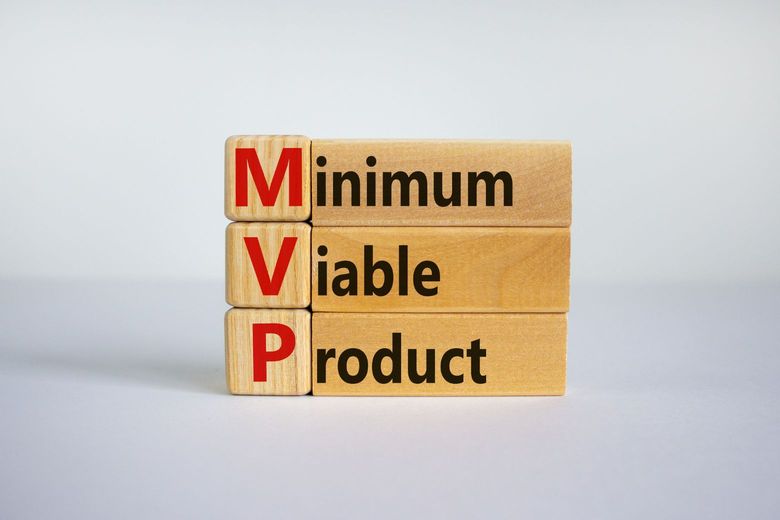
Lalita D'Cruze10/01/23
6 min read

The origin of Agile is deep rooted in Software Development, but it’s not the only environment that benefits from this approach to decision making and delegating. By taking the time to understand the core principles of Agile, you can build them into your existing marketing strategy techniques to more efficiently achieve your deliverables.
In this article we‘ll explore how implementing a more Agile approach to strategy could benefit not just your charity website development project, but your organisation as a whole.
For those unfamiliar with the Agile methodology, it was originally a set of management principles used by the software development industry to move and adapt more quickly. Today, Agile is widely used across a vast range of industries and organisations to bring an adaptive approach to project management and put a greater focus on customer needs.
The Agile approach is based on teams developing products over small timeboxes known as ‘sprints’. Users are invited to test an early version of the product, feedback is evaluated, the product refined, then the process is repeated until success is achieved. This is known as working iteratively – repeating a process with the goal of improving each time.
Agile encourages your team to embrace change with a focus on speed and experimentation. Adopting Agile values is ultimately accepting that we cannot and will not know everything in advance. By accepting and embracing this, we can develop adaptive strategies that puts communication with our peers and customers at the forefront, allowing us to respond to new information and feedback as it arrives.

Traditional approaches to strategy can involve weeks or months of research and planning. They encompass reems of documents and PowerPoint slides detailing to a fine point how the strategy will be delivered; often passed down from senior leaders with very little input from the team who will be out there making it happen. They can be strict and inflexible, with little scope for change or flexibility.
Your Agile strategy won’t be like that. Agile will help you to collaborate with your team to achieve a shared vision without dictating how they will get there. They’ll learn by putting early versions of innovative products in front of customers for feedback. They’ll build on that feedback, striving for continuous improvement, motivated by autonomy to use their expertise to reach goals and achieve deliverables.
Of course, the changes you make don’t have to be radical to get results. Here are just some of the ways you can use some gentle Agile techniques to revitalise your organisation’s strategy and set yourself up for a faster feedback loop.
The Agile methodology works in pre-specified, cyclical units of time. Let’s say you are working towards a policy change, a new business process or marketing strategy. You can use elements of Agile to create a sense of urgency with a common deadline across your team.
First, decide how long your timeboxes or ‘sprints’ are going to be. This is a fixed timeframe within which you will have one or more deliverables to review with your peers. The optimum length is typically between one and four weeks, with two weeks generally being most popular.
You want enough time to viably achieve your objectives, but keep it short enough that the team stays focused. At the end of each timebox assess your achievements, set new goals, discuss what worked and what didn’t, then go again. Be ambitious when planning your sprint, but also be realistic about what your team can achieve.

Rather than waiting weeks or months to get a relatively polished product ready for testing, Agile encourages us to get a Minimum Viable Product (MVP) off the ground for testing as quickly as possible.
An MVP is a product with the minimum amount of features required for it to be released and tested. The final, complete product is only developed after feedback is received and acted upon. This Agile principle can prevent time being wasted in the fine tuning of something that perhaps needed to go another direction a while ago.
Those familiar with Agile will appreciate that well communicated prioritising is core to achieving your deliverables quickly. By identifying and focussing on the critical tasks of your MVP, we can get the main components done and dusted to get feedback underway. It also ensures everyone on your team is on the same page and understands what is most valuable to the project right now. Luckily, there’s a handy method (and another acronym) to help with that…
When you’re planning your deliverables, try using this tool favoured by Agile to help you to categorise tasks into four levels of importance. Agile likes this because some tasks can and will take longer than we estimated (but that’s okay); when this happens, we just need to prioritise to avoid critical tasks becoming compromised.
MoSCoW stands for:
When you use MoSCoW to prioritise the tasks needed to get that all-important MVP off the ground, you may decide that some don’t actually need to be there. MoSCoW analysis is really good for identifying and eliminating those unnecessary elements to help you streamline your strategy – saving time and money.

Amongst so many benefits, Agile fosters strong communication amongst your team through regular check ins, called daily stand ups. These are typically short meetings that take place first thing every workday.
Team members deliver a quick summary of where they’re up to with their timebox tasks, what they’re working on that day and if they foresee any challenges that the team could help them resolve. As the name suggests, everyone should be on their feet for the meeting, this helps people to keep their updates concise and prevents people breaking out into problem solving.
Thanks to the adaptive and iterative nature of Agile, your everyday tasks can change quickly as you progress through projects. It makes strong communication essential to ensure everybody knows what the new goalposts are and to welcome their expertise in delivering those tasks. A daily stand up will give everybody the reassurance that you’re all in it together and available to support each other.
Agile fosters an experimental work ethic and embraces failures. If you get something wrong, you simply assess and start again. The important thing is to take what you can from the work you’ve invested. Even if you’ve only learnt what not to do next time, it is still experience and you can build on it. Being a reflective practitioner is key to adaption and iteration.
The Agile principles celebrate frequent retrospectives and realistic planning of your timeboxes. With time and practise you will notice the pace your team can comfortably and consistently deliver (your velocity). By observing,adapting and refiningyou can increase this velocity over time.
Are you an organisation looking to redevelop your charity website? Our project team are PRINCE2 Agile qualified and we work to the highest standards in project management. Speak to us today to find out how we ensure our charity website development projects are delivered on time and to budget.